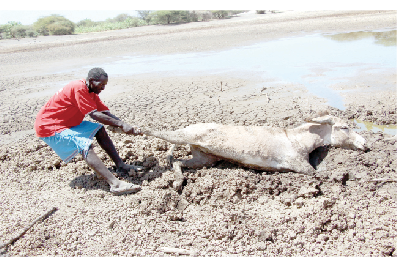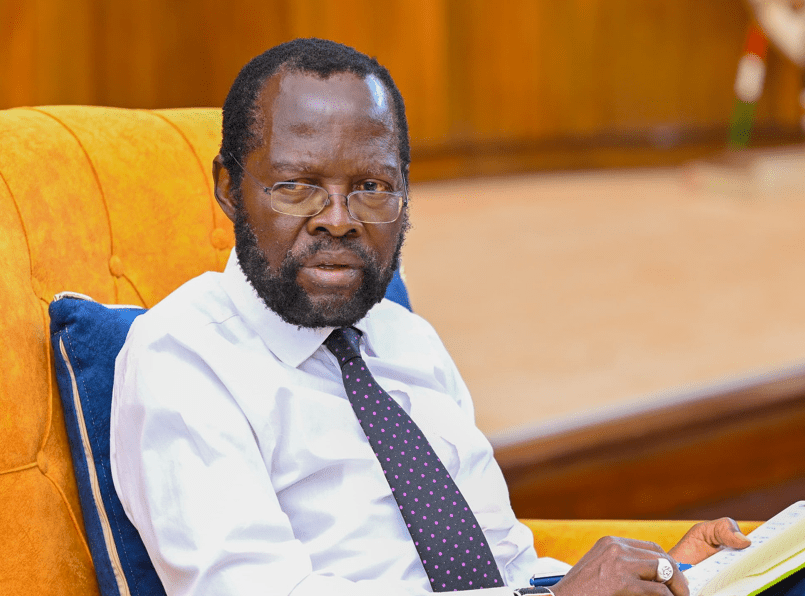Auditor reveals how weak laws curtail fight on hunger, drought

Efforts by national and county governments to mitigate drought and hunger may not bear fruit if the supporting policies and laws on Disaster Risk Management (DRM) are not enacted, the office of the Auditor-General has warned.
And although the country has a national drought contingency plan, the planning process has shortcomings that are prone to abuse. The revelations are contained in a performance audit report on the management of drought in Kenya by the National Drought Management Authority (NDMA).
The audit revealed that both the National Policy on Disaster Risk Management and the National Drought Emergency Fund (NDEF) Regulations 2017 were still in draft form.
Section 5(e) of the NDMA Act 2016 requires the Authority to facilitate national and county level drought contingency processes and preparation of national and county level drought contingency plans.
Four activity areas
The audit covered July 2015 to June 2019, and was limited to four of the NDMA activity areas — resilience, contingency planning and response, drought information, and drought coordination.
The audit covered all the 23 arid and semi-arid (ASAL) counties where NDMA operates in. However, inspection of NDMA’s operations was carried out in seven counties — four arid and three semi-arid.
These were Baringo, Marsabit, Isiolo, Turkana, Laikipia, Kajiado and Kitui. Data was collected through interviews, documentary reviews, and physical observations.
Only Baringo and Laikipia counties had disaster management policies, while Turkana and Marsabit counties had draft policies. Also, only Kajiado, Kitui, Marsabit and Turkana counties had laws on disaster risk management, while Isiolo had a law on climate change adaptation.
According to Auditor General Nancy Gathungu, the yet-to-be enacted policies and laws are used as directives supporting budgetary allocation to DRM. “Their absence affects the availability of funds for response in the event of drought, leading to delays,” Gathungu says in the report.
“While the audit revealed that NDMA had offered technical assistance during the development of the legislation, no evidence was provided to show that they undertook sensitisation of legislators on DRM and the need to enact the supporting legislation,” she adds.
Section 5 (g) of the NDMA Act 2016 requires the Authority “to identify, design and implement projects and programmes that shall strengthen resilience to drought and climate change.”
“A review of the Participatory Drought Risk Management Approach (PDRA) reports revealed that NDMA had only worked with a few Wards to identify community vulnerabilities,” she notes.
For example, Kitui and Laikipia counties had only seven Wards each that took part in the PDRA exercise, which was the highest number. Isiolo and Kajiado counties did not provide any PDRA report for audit.
While non-governmental organisations (NGOs) had also facilitated communities to undertake PDRAs, the audit noted that PDRAs undertaken by NGOs were site-specific and did not cover the whole Ward.
“Due to the limited facilitation of PDRAs, the Authority and the Government, both at national and county level, had limited information on the vulnerabilities of communities, which could be used for planning purposes,” the audit states.
Incomplete implementation
Further, a visit to some strategic drought preparedness projects implemented by NDMA, under the European Union Drought Contingency Fund, revealed instances of incomplete implementation.
For instance, “in the Mathima Integrated Drought Preparedness Project in Kitui, which had components of water, livelihood, forestry and soil conservation, only the water component had been implemented at the time of our visit in September 2019, yet the project was supposed to have been completed by 2018”.
Similarly, Nadungoru Community Pasture in Laikipia, whose components include pasture establishment and livestock finishing, had been completed and handed over to the community. But physical verification revealed that the livestock finishing component was not implemented.
The NDMA indicated that European Union projects are usually implemented in partnership with other players, but these often failed to complete their tasks.
The Asset Creation Programme (ACP) implemented under NDMA’s coordination also had challenges and only managed to create resilience among a few beneficiaries. It was also observed that ACP activities were small scale in most instances.
In Burat Irrigation Scheme in Isiolo, Teso Community Project in Moyale, and Loboi Community Irrigation Scheme in Baringo, among others, only a few acres of land were covered.
The audit further revealed that the Hunger Safety Net Programme II had several cases of beneficiaries not being able to access their money.















